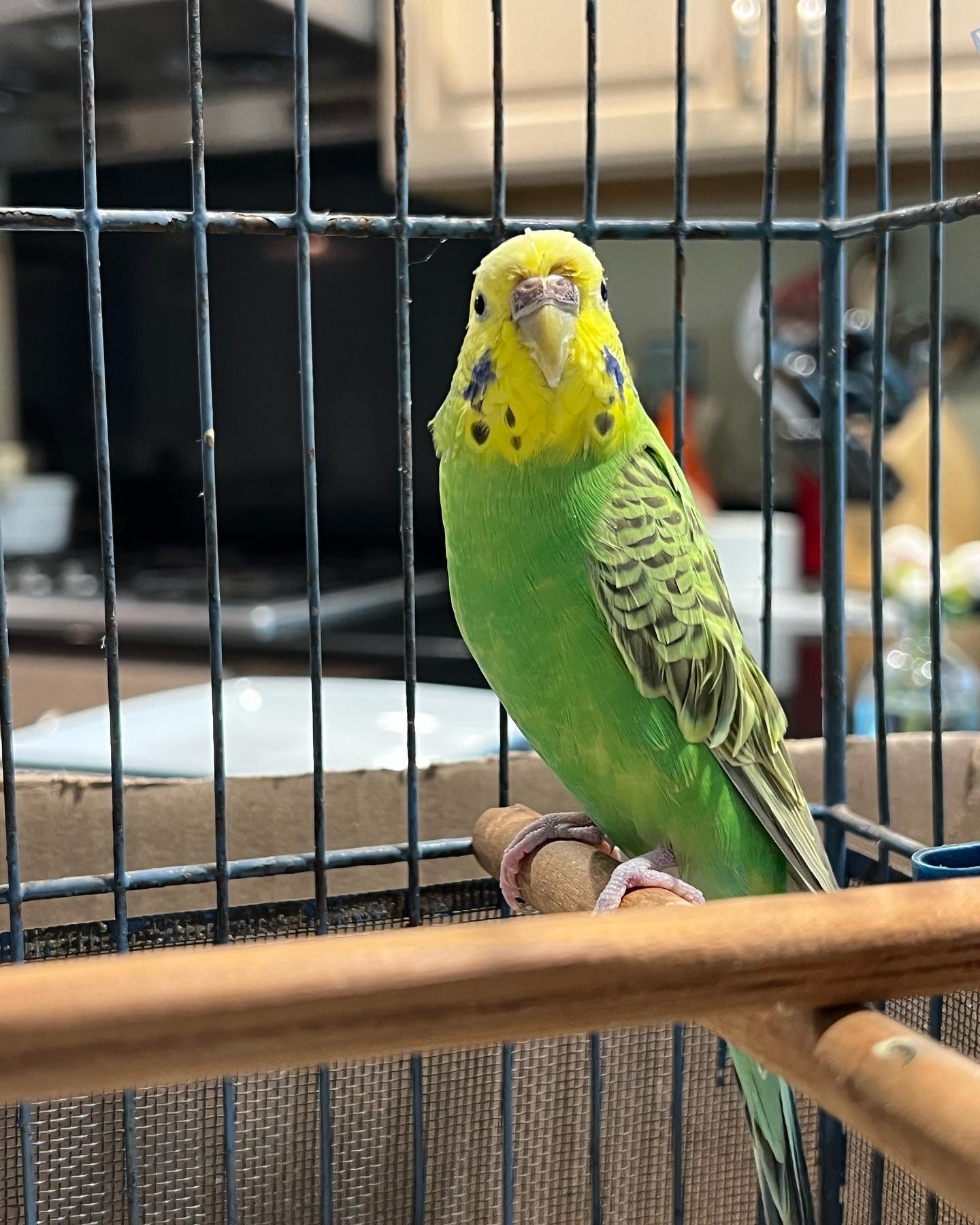
the staff of the Ridgewood blog
Ho-Ho-Kus NJ, Ho-Ho-Kus Police Department has found a Budgie Parakeet (female) . If you’re missing this bird, please contact police headquarters at 201-652-1700.
Budgie parakeets, also known as budgerigars or simply budgies, are small and colorful birds that are popular as pets typically kept in cages.
When it comes to budgie parakeets, there are several key things you should know:
- Appearance: Budgies are small and colorful birds, usually measuring around 7 to 8 inches (18 to 20 centimeters) in length. They have a distinctive appearance with a variety of vibrant feather colors, including shades of blue, green, yellow, and white. Male budgies typically have a bluish cere (the area above the beak), while females have a brownish cere.
- Social Nature: Budgies are highly social birds and thrive on companionship. They enjoy interacting with both humans and other budgies. If you plan to keep a budgie as a pet, it’s recommended to provide them with a companion or spend plenty of time interacting with them to prevent loneliness.
- Lifespan: Budgies have an average lifespan of 5 to 10 years, although with proper care, they can live even longer. Providing a nutritious diet, regular veterinary check-ups, and a stimulating environment can contribute to their overall health and longevity.
- Diet: A balanced diet is crucial for budgie parakeets. Their main diet consists of high-quality commercial bird pellets, supplemented with fresh fruits, vegetables, and occasional seeds. Avoid feeding them avocados, chocolate, caffeine, and foods with high sugar or salt content, as these can be harmful to their health.
- Housing: Budgies should be housed in a spacious cage that allows them to fly and move around comfortably. The cage should have horizontal bars for climbing, as well as perches of varying thickness to promote foot exercise. It’s important to keep the cage clean and provide toys and accessories to keep them mentally stimulated.
- Vocalizations: Budgies are known for their chattering and singing. They have a wide repertoire of vocalizations, including chirping, whistling, and mimicking sounds and words. Some budgies can even be trained to mimic simple tunes or phrases with patience and consistent training.
- Training and Enrichment: Budgies are intelligent birds and can be trained to perform tricks or interact with toys. Positive reinforcement techniques, such as offering treats and praise, can be used to encourage desired behaviors. Providing a variety of toys, perches, and activities in their environment keeps them mentally stimulated and prevents boredom.
- Health Care: Regular veterinary check-ups are essential to ensure your budgie’s health. Signs of illness in budgies include changes in behavior, decreased appetite, fluffed-up feathers, discharge from the eyes or beak, or difficulty breathing. If you notice any of these symptoms, it’s important to seek veterinary attention promptly.
Remember, budgies are active and social birds that require care, attention, and a stimulating environment to thrive. With the right care and a loving home, budgie parakeets can make delightful and entertaining companions.

Polly want a cracker